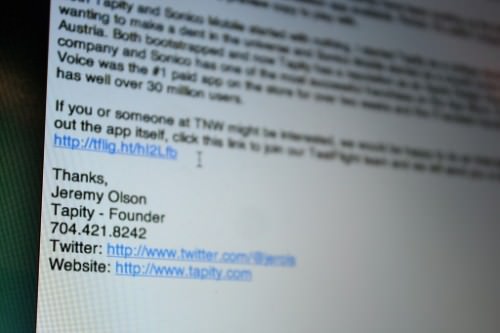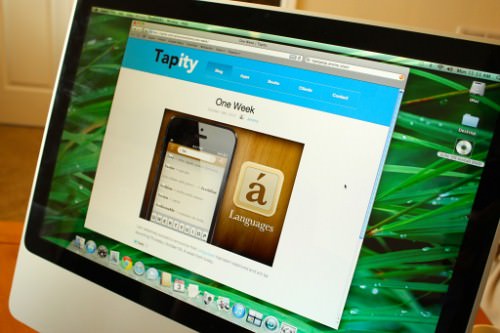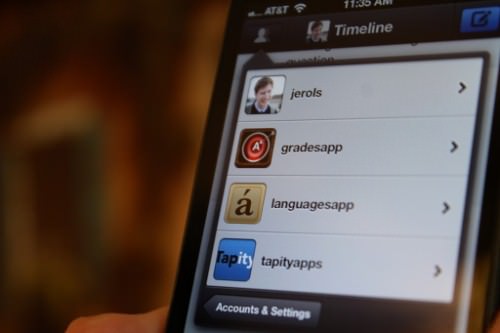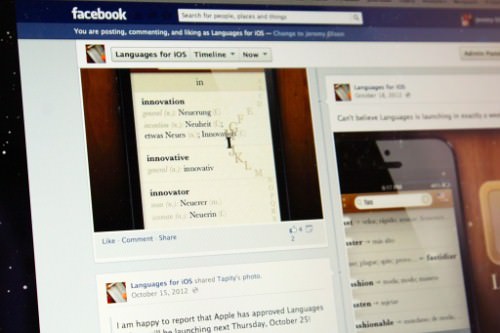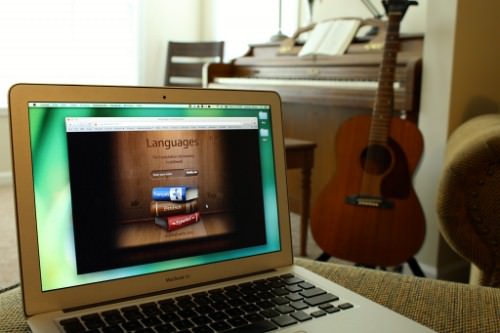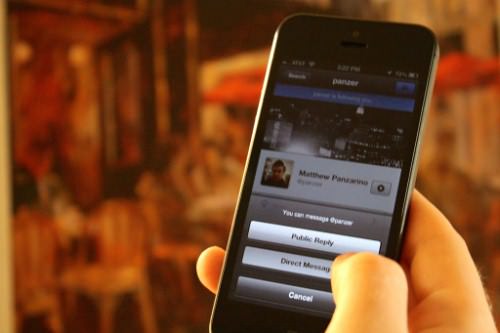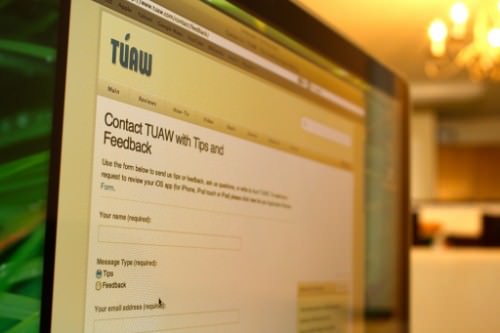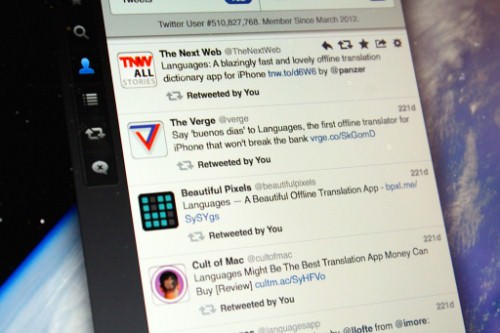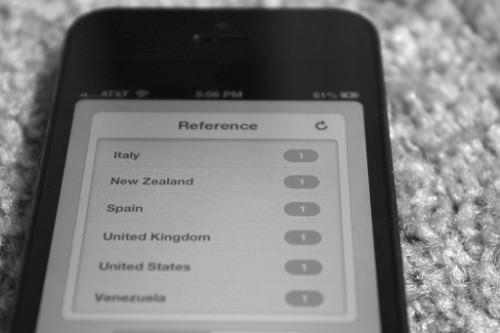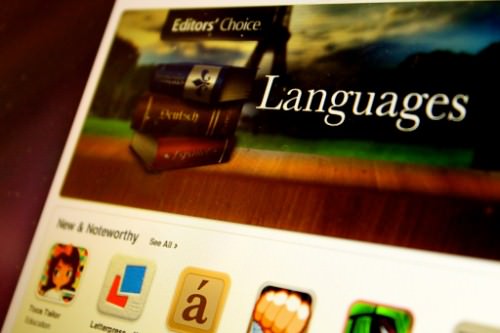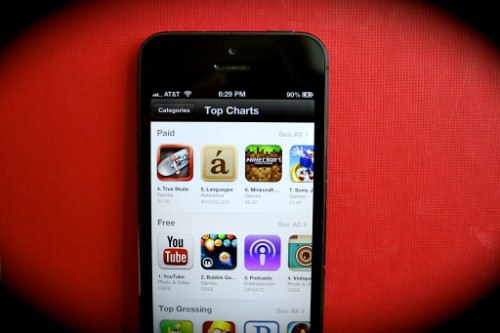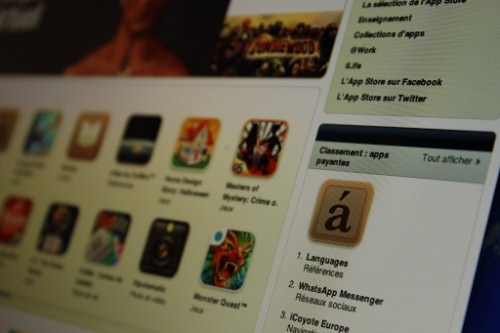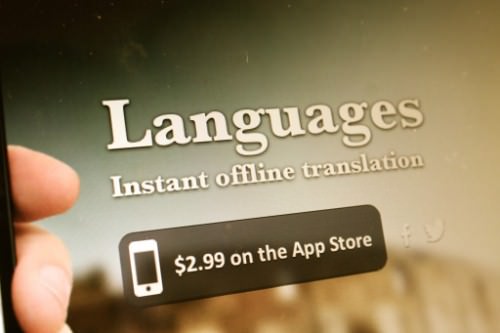Tale Of A Top-10 App, Part 2: Marketing And Launch
Our anticipation was building. Between defining our language translation app, sketching it out, obsessively designing and iterating, and juggling other projects — all covered in the first part of our case study — we had been working on Languages for close to a year. It was finally go time.
Even the coolest app in the world is doomed to swiftly descend into the abyss of obscurity if no one knows about it. So, part two of our journey is all about marketing. It turns out that you don’t need a huge marketing budget to get into the top 10 in the App Store.
Seriously, Marketing?
I never thought of myself as a marketer. To me, “marketing” sounded like a dirty word. But when I was building my first app, Grades, I actively watched the indie developers who were consistently building hit apps, and sure enough, along with factors such as delightful design and amazing execution, a key factor to consistent success was great marketing.
The cool part is that, as I found out, marketing doesn’t have to be about spam, meaningless buzzwords or sleazy Twitter follower generators, and it certainly doesn’t have to be expensive. If your product is great, marketing can be genuine, fun and free. Ultimately, it becomes a part of everything you do, without your even realizing it.
Marketing Starts From Day 1
We often have the misconception that marketing is what you do once you’ve launched a product. Too many people have come up to me after a talk or after reading one of my articles and said, “We just launched our app and got a few small blogs to write reviews, but those have generated only a few sales. What’s the magic trick that gets an app on The Verge or featured by Apple?”
Sorry, no magic tricks here. Just a lot of hard work, and that takes a long time. The good news is that it’s completely achievable, but you can’t wait until your app is ready to launch to get started.
Do It Yourself
You would think that the ideal situation is to have a boatload of cash and hire a public relations (PR) firm.
Wrong.
You — the designer, the developer, the founder — are the very best person to market the app.
Why?
- The press love to hear directly from the folks in the trenches.
- A lot of PR agencies don’t get the nuances of app marketing.
- Relationships with journalists is the currency of PR. Even if a PR firm landed you some great articles, they would take those relationships with them, leaving you with no long-term benefits. If you do it yourself, you will be cultivating those relationships, making future launches a lot easier.
There are definitely some exceptions. I know some marketers who really understand the space and who deliver results. But in general, doing it yourself is better, especially if you are in this game for the long haul.
Make Friends
Later in this post, we’ll talk about marketing tactics — crafting our pitch, drawing lists of blogs and so forth — but those tactics don’t mean a whole lot unless you understand something very fundamental about grassroots marketing: It’s all about the people.
The problem is that we view big websites like The Verge as monolithic black boxes into which we insert a pitch and hope for the best. But who runs The Verge? Real people with flesh and bones. Who runs the App Store? People. How do you get featured? By winning the hearts of those people.
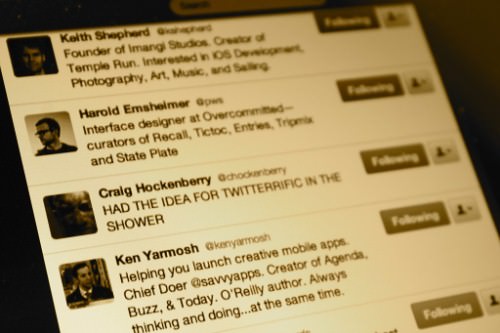
These days, getting my apps featured isn’t that difficult. Why? Because over the past four years, I have made friends with people at almost every major venue that features apps, including Apple. Now, whenever I release a product, I can direct message a few people on Twitter and send a few emails and, assuming my product is at the caliber that my friends have come to expect from me, be fairly confident that launch day will go pretty well. That’s the power of people-focused marketing.
Remember that just a few years ago, I was an obscure college freshman, starting at ground zero. No apps. No friends. Not even any connections. So, if I can do it, anyone can.
How did I do it?
- List influential people. It started by making a list of influential folks in the iOS industry: app designers and developers (David Barnard, Phill Ryu, etc.), technology journalists who cover apps, folks at Apple. Limiting this list to tech journalists would have been a huge mistake. In the app world, the top players know each other, so a connection with one influential app developer could very well lead to a connection with Apple or the press — and the iOS community is chockfull of great people who love to share their experiences. I’ve compiled Twitter lists for top app makers, app journalists, and Apple employees.
- Actively monitor. I actively watched what these people were doing, looking for opportunities to connect in tasteful ways. Suppose Phill Ryu had a question on Twitter that I could answer, or Ellis Hamburger wrote an article on The Verge that I really enjoyed — I took those opportunities to engage with folks on their turf. I never spammed them with my apps or my blog — once someone likes you, they’ll naturally check out your stuff.
- Go where they are. Everyone is on Twitter, so I made sure that my profile there looked interesting and I got active. I went to conferences such as the Worldwide Developers Conference (WWDC) and South by Southwest and actively got out of my shell to meet the people around me and the people on my lists. Because I was a designer, I also hung out in communities like Dribbble and Forrst to connect with other designers. Finally, I occasionally emailed influential people — I didn’t spam them, but I would say something nice about an article they wrote or ask a close-ended question about something they were interested in (close-ended because you are not likely to hear back on questions that require long answers).
- Do cool stuff. If you aren’t building cool apps that are innovative and well designed, then gaining respect in the app community will be tough, and respect is a pillar of friendship. You don’t necessarily need to have apps in the App Store, though. I made a lot of my connections before my first app ever launched. A big reason for that is that I blogged and tweeted about what I was learning from app developers about making successful apps, and I posted very introspective thoughts about developing my first app. That caught people’s attention, and doing that well is a great way to gain respect before you’ve actually “made it” in the industry. This is important, because if you’ve gotten someone’s attention by talking to them at a conference or by engaging them on Twitter, then you need to gain their respect in order for them to take the leap of following you on Twitter (which, as weird as it sounds, can be a big deal in establishing a lasting friendship).
- Cultivate long-term friendships. Once I established a connection with someone, I cultivated it by discussing issues on Twitter, in email and at conferences, giving them beta access to my apps, requesting feedback on projects (especially high-profile ones), and saying something nice about them once in a while — I don’t know one human being who doesn’t have at least a smidgen of ego.
This might sound a bit manipulative when broken down like that, but it’s really just about being a friendly, interesting person and going out of your shell a bit to meet the great folks at the top of our industry.
I like how David Barnard put it:
"There are some really cool people in this industry. If all you do is beg for coverage, you’re missing out on getting to know some great folks."
If you follow this advice, then the advice below will produce great results. If not, I can’t guarantee a whole lot of fruit from the more tactical stuff.
Launch Plan: Concentrated Blast
The App Store is not the Web. On the Web, you can launch softly, get some articles here and there, and build your user base over time.
If you are trying to sell a mass-market app for $0.99, then scattered marketing doesn’t work. To get hundreds of thousands of downloads, you need to make an effort and get the app to “chart,” to blast up the App Store’s sales charts. Once your ranking is high enough, you will experience a snowball effect because the charts are where most people look for apps.
With that in mind, we prepared as much as we could before the launch in order to make the blast as concentrated as possible.
Building Buzz
A couple months before the launch, we started building anticipation. The goal was to collect email addresses, Twitter and Facebook accounts that we could reach come launch day.
Blogging
We started by writing blog posts about the making of Languages. We posted our UX mapping process, progress reports, rants on gestures, among other things. Blogging played a large role in building our brand and credibility with previous apps, but a lesser role for this launch. It was probably still worth it, though, because continuing to build your blog’s readership is always good.
I like to use my personal Twitter account (@jerols) most of the time, but we decided to create a @languagesapp Twitter account to make it easy for us and others to refer to the app without having to link to it (“Putting the final touches on @languagesapp”). My followers could then click the Twitter user name to find out more information about it. While it was hard to remember to post consistently to the @languagesapp account, I posted a teaser screenshot once in a while and retweeted it from my personal and company accounts, giving the @languagesapp account more exposure.
With fairly minimal effort, we were able to garner about 500 followers for the account.
I’m honestly not a Facebook marketing expert and didn’t spend a lot of time experimenting with it, but I did set up a page and post screenshots and status updates once in a while. It got about 50 likes, half of which were friends. I could have experimented more and gotten a lot more likes, but it didn’t seem like the most effective use of my time.
Dribbble
As a designer, it was only natural to post my UI mockups to Dribbble, a design community in which you can get great feedback and sometimes get viral sharing of your designs. I’m not a Dribbble pro, and my designs have never made it to Dribbble’s famous front page, but I did get some valuable feedback and a few thousands views to boot.
Teaser Website
We always build a teaser website a month or two before launch to collect email addresses of people who would like to know when the app launches. About 200 folks subscribed. Not something to write home about, but every little bit helps. Some of the subscribers were influencers in the industry, which is always good.
Pitching The Press
Two weeks to go. Pitch time. I was fortunate enough to have been able to show an early build to some of my journalist friends at the WWDC, so I already had some really hot doors to knock on.
Warm Calls
Most of the journalists I knew personally already followed me on Twitter, so, in most cases, the best way to initiate the pitch was to send them a direct message on Twitter, teasing them with a screenshot and asking whether they wanted to play with a prerelease build. These guys are super-busy, so I didn’t hear back from all of them, but many of them were on board.
We used TestFlight to send out prerelease builds to the press. Most of them had TestFlight accounts already, so getting a build to them was pretty easy. Later on, once the app was finalized and approved by Apple, we replaced TestFlight with promo codes in our pitches, which are more convenient. (Promo codes are valid after the app is approved by Apple but before it is available to the public.)
After sending out the builds, I sent the journalists personalized thank-you notes, which also communicated the basic pitch and hinted at some advanced features to check out.
Our programming partner, Sonico, also had some great connections. So, they contacted the journalists with whom they had the strongest relationships, and we contacted ours.
Cold Calls
While warm calls are ideal, I’ve had some success with cold calls — i.e. pitching journalists and individuals with whom I don’t already have a strong connection. I created a spreadsheet with all of the websites I wanted to pitch and prioritized them by how influential I perceived them to be. For the really big websites, I identified the best individual journalists to contact and sent them a personalized pitch. For the smaller websites, I generally just wrote to their tips@ email address and only personalized the “Hey, [website’s name] team” greeting.
As expected, we got only a few responses from the cold calls, but it was still worth it.
When Personalization Goes Wrong
I generally personalize the greeting and first sentence of my emails, especially for journalists whom I know. Unfortunately, this time, I had a “brilliant” idea: to refer to the journalist’s website in the middle of the email, to make it even more personal!
Bad idea. I forgot about that reference in one of my pitches and left in the name of a competing website. Talk about embarrassing and unprofessional. From then on, I decided to keep it simple. Don’t include personalized references anywhere but at the beginning of the email, and always double-check before sending! Thankfully, the journalist was a friend and took it well.
The Pitch
Rather than talk about what I think makes for a good pitch, I’ll just show you mine.
"Hey [journalist’s name], [Personalized message to the journalist and introduction to the pitch.] Launching in a week, Languages is the fastest, most reliable and most affordable offline translation app to hit the App Store. Most translation apps break down when you need them most: traveling without an Internet connection. Languages gives you the peace of mind that you’ll never be stuck without reliable translation. While other offline translators charge $5 to $20 for a single language, Languages packs 12 common language pairs into one app for $0.99.Please let me know if you would be interested in doing a review, and I would be happy to provide more information or answer any questions. Thanks, Jeremy Olson Tapity - Founder 704.421.8242 Twitter: https://www.twitter.com/@jerols Website: https://www.tapity.com"
- Price: $0.99
- Launch Date: Next Thursday, October 25
- Video Demo
- Website: https://itranslate.com/
- Press Kit
- Promo Code: WJ9HXJNAPL73
It certainly wasn’t perfect (if you want to learn how to make a perfect pitch, you should probably read Pitch Perfect by Erica Sadun and Steve Sande), but it was pretty short, gave the basic value proposition pretty quickly, and provided the key information that journalists like. It also included the press kit, a folder full of screenshots, the app icon at various sizes, and a press release.
Video Or No?
A lot of great apps launch with an amazing launch video. It’s a great idea if you can afford to hire a video producer or can shoot it yourself well… like, really well. But whether you make a video for the public or not, definitely make a short one for the press. Journalists would rather spend 30 seconds watching your app in action than spend a few minutes trying to “get it” for themselves on their phones.
In our case, we didn’t have time to shoot a professional video, so we just made a short video for the press, showing off all of the features. It was pretty rough, but it did the job.
Go Time
“Sorry, can’t talk right now. I’m super-busy launching Languages.” That was typical launch-day conversation. You would think that launching an app is a pretty good excuse to do nothing. It’s not. While I might have responded to some urgent questions from journalists or taken an emergency call with Apple here and there, this was really a day to kick back and watch all of our hard work pay off.
The majority of the day consisted of one activity: refreshing. Refreshing Twitter search for “Languages app” to see who was talking about it. Refreshing my “mentions” feed to see who was saying “Congrats!” Refreshing Google’s “past hour” search results for “languages” to uncover any new reviews.
Most of all, launch day can be characterized quite accurately as one of desperate and incessant refreshing of the App Store to see where Languages stood in the infamous top charts. It is the ultimate stroke of the ego after a year of blood, sweat and tears. This, folks, is what dreams are made of.
Results
Aside from a few blunders on my part from miscommunications about when journalists could start posting reviews, the launch went even better than I expected.
We got some amazing reviews from some of my favorite journalists.
We blasted the announcement to Sonico’s substantial mailing list, the Languages mailing list, our blog and social media channels, resulting in a lot of buzz on Twitter and a swift climb up the App Store’s charts. Before long, we reached the number one spot in the “Reference” category.
Apple
Our relationship with Apple is one of my company’s greatest assets and one that took time to cultivate. Getting featured prominently by Apple is one of the best things that can happen to your app. It will usually get you far more downloads than any coverage from the press.
When people ask me how I’ve gotten all of my apps to be featured by Apple, I usually recommend a big marketing push during launch in order to get Apple’s attention. This time, though, we were fortunate enough to have piqued Apple’s interest a few months before Languages launched. We were fairly certain that Apple would feature us, but were pleasantly surprised to be featured as the “Editor’s Choice” in many countries and very prominently in the “New & Noteworthy” section in others.
Blast Off!
Concentrating all of our marketing on launch day really paid off. With over a dozen press reviews, thousands of tweets and retweets, a blast to our mailing lists, and an important feature from Apple, Languages blasted into the top-25 overall paid apps on launch day. The snowball effect kicked in, and by day two, Languages peaked at number 5 in the US.
Results from the other countries were staggering, with the app hitting the number one spot in France and a few other European countries. Over 70% of our sales came from outside the US. Suffice it to say, app localization, the App Store description, and the screenshots that showed most of the major European languages paid off.
Whew, what a ride! I could finally check off one of my life goals: beating all incarnations of Angry Birds in the charts, if only for a short period of time.
Aftermath
Languages managed to stay in the top 100 for a couple weeks, and then slowly but surely made its inevitable descent down, down, down into the App Store abyss. Fortunately, Languages found a pretty comfortable resting spot around number 30 (and then later number 50) in the “Reference” category’s top-100 list.
We were pretty happy with the few hundred downloads it was getting per day. It wasn’t going to make us millionaires, but most of the money you make from these kinds of hit-based apps will be from major launches — i.e. major updates, the iPad version, etc. — so, the decent consistent sales are a bonus.
Support
Support doesn’t just mean updating the app with new features. One of the most time-consuming parts of making a popular app is addressing all of the bugs, feature requests and comments you receive via email and Twitter every day. During launch week, we were getting hundreds of emails a day. No joke.
Thankfully, the comments were mainly positive, asking for new languages and features.
I tried to respond to a lot of the emails, but pretty soon we realized that support was a full-time job, so we shifted responsibility to one of Sonico’s support guys. That being said, we did look through the emails to find recurring bugs reports and feature requests so that we could address them in the next version.
I expected users to ask for things like voice support and conjugation, but it turns out the most popular feature request was to be able to customize the bookshelf and to hide dictionaries not being used. That blew my mind, but we made sure to include that in the next version.
The most negative feedback was from users who said that, while the interface was great, they couldn’t find certain words in the dictionary. We learned from the Apple Maps fiasco that the robustness of an app’s content can easily overshadow the beauty of the interface. While our content wasn’t perfect, it was pretty decent, so fortunately we didn’t reenact the Apple Maps disaster, but we did need to work on it going forward.
Raising The Price
We decided to go for the mass market at launch and set the app at $0.99. If you are trying to hit the top charts, the app needs to be an impulse buy.
Having gone with a launch-sale approach, we raised the price to $2.99 once the app fell out of the top 100. Raising the price when the app is falling out of the charts might seem counterintuitive, but you actually make more money that way. The only reason we ever set it at $0.99 was to get the app to the top charts and to keep it there as long as possible. Once it falls out of the charts, the people who will find it are not impulse shoppers; they will have to actively look for it and will be willing to pay a higher price for it. This has worked out well for us.
Conclusion
Wow, that was quite a journey. If you’ve scrolled to the end for a reader’s digest, you’re in luck. The big lessons to take away are these:
- Yes, marketing matters! Start way before your app launches.
- Do it yourself by making friends in the industry.
- Build buzz through social media.
- Concentrate the marketing in blasts.
- Spend time getting your pitch right.
The App Store is certainly not easy street. Building a hit app takes a ton of hard work, and there are never any guarantees. That being said, it sure is a fun ride, and there is still plenty of opportunity for those who are willing to work at it. So, get out there and build something great!
Further Reading
- How To Succeed With Your Mobile App
- Elements Of A Viral Launch Page
- Smart, Effective Strategies To Design Marketing Campaigns
- Key Ingredients To Make Your App Go Viral


 Agent Ready is the new Headless
Agent Ready is the new Headless


 SurveyJS: White-Label Survey Solution for Your JS App
SurveyJS: White-Label Survey Solution for Your JS App
